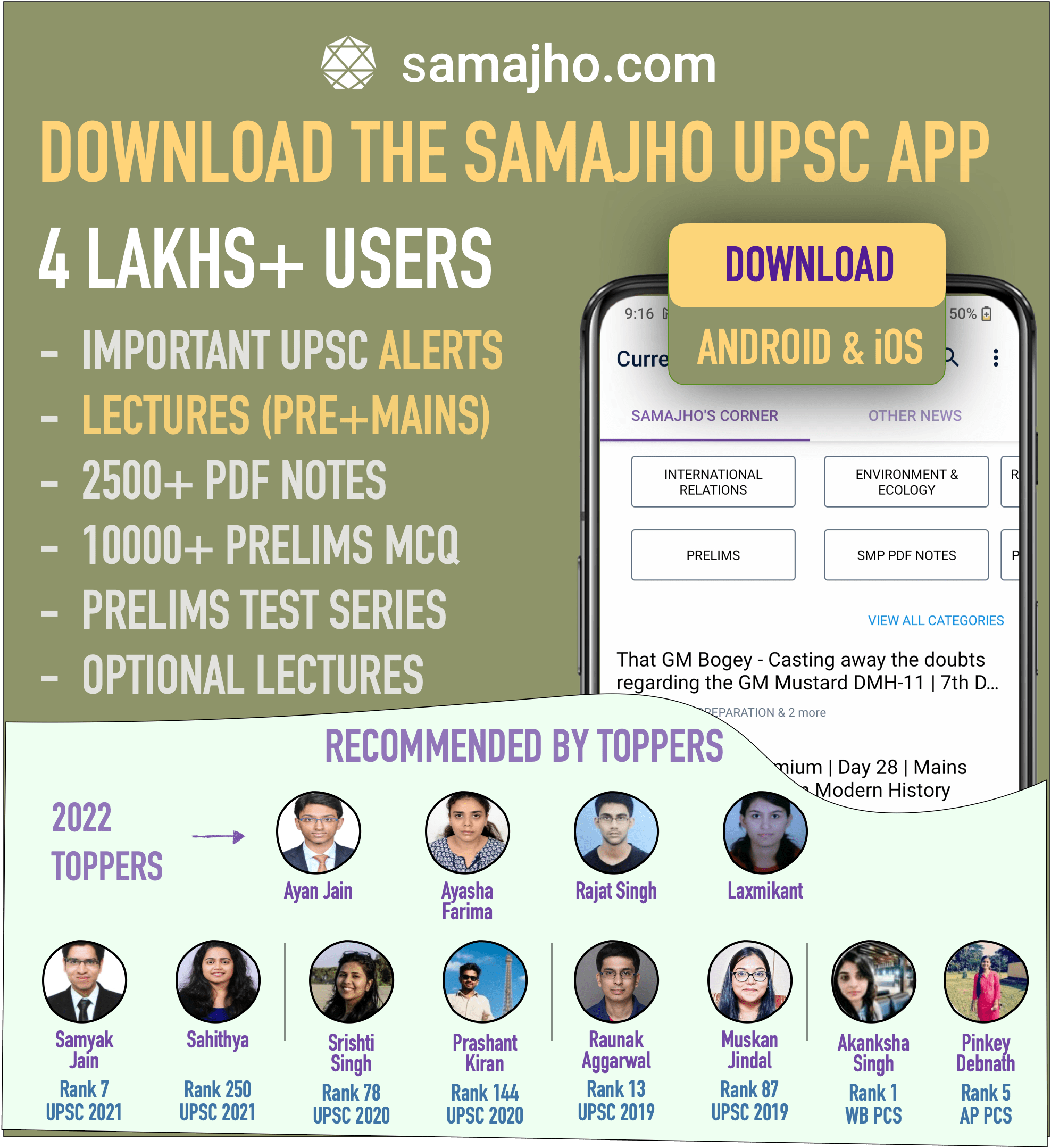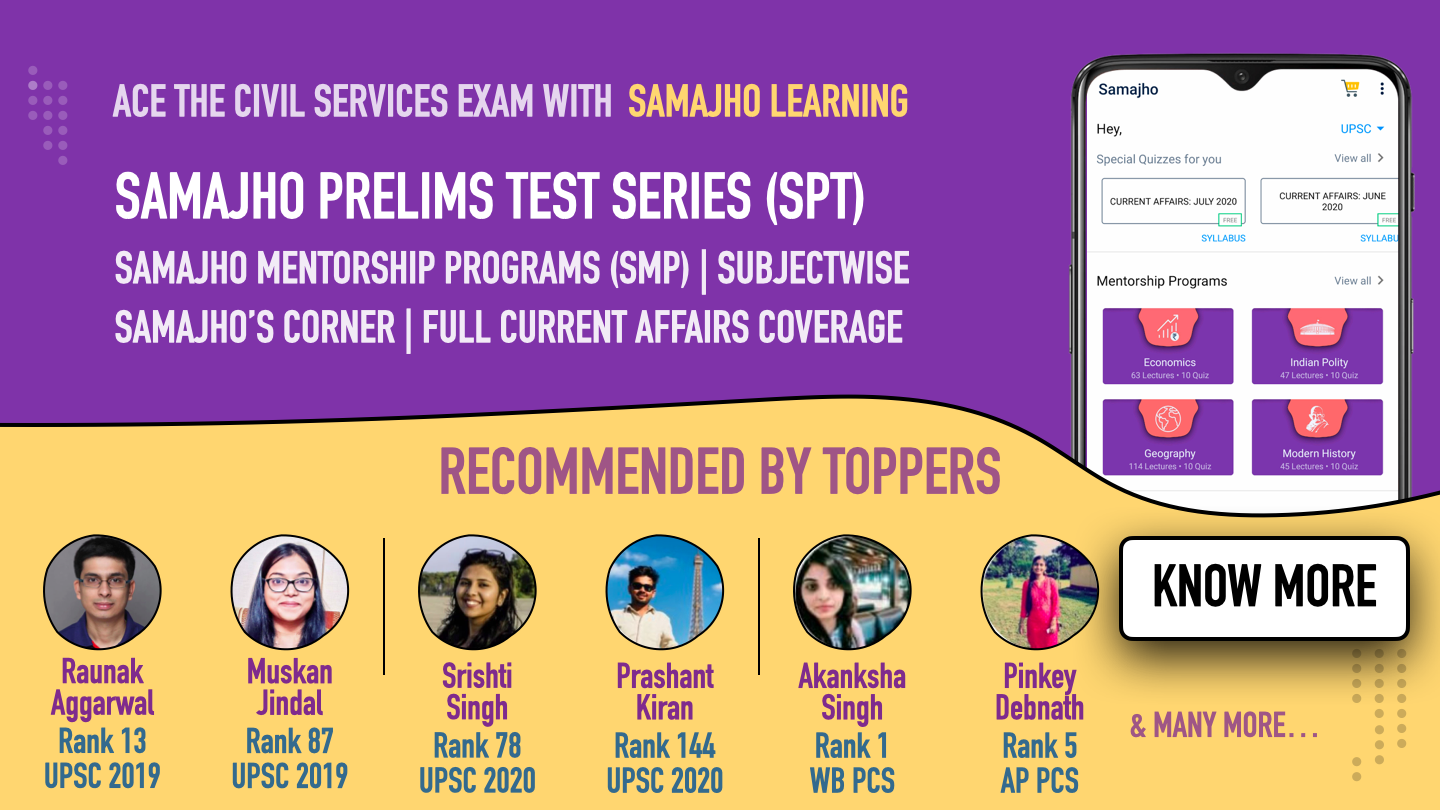A renewable energy revolution, rooted in agriculture | 26th October 2022 | UPSC Daily Editorial Analysis
(1)_page-0001.jpg)
What’s the article about?
- It talks about how the use of paddy straw for the production of Compressed BioGas (CBG) initiated a renewable energy revolution which has its roots in agriculture.
Relevance: GS3: Environmental Pollution and Degradation; Infrastructure: Energy
What’s the crux of the article?
- Every year farmers in Punjab, Haryana and western Uttar Pradesh dispose of paddy stubble and the biomass by setting it on fire to prepare fields for the next crop.
- The resultant clouds of smoke engulf the entire National Capital Territory of Delhi and neighbouring States for several weeks between October to December. This plays havoc with the environment and affects human and livestock health.
- Thus the government and other organisations are working on the solution to this issue.
Solutions:
- The Commission for Air Quality Management in the National Capital Region and Adjoining Areas (CAQM) had developed a framework and action plan for the effective prevention and control of stubble burning.
- This includes in-situ & Ex-situ management.
- NITI Aayog approached FAO India in 2019 to explore converting paddy straw and stubble into energy and identify possible ex-situ uses of rice straw to complement the in-situ programme.
- Government launched a scheme “Sustainable Alternative Towards Affordable Transportation (SATAT)- to produce CBG from paddy straw.

Advantages:
- A techno-economic assessment of energy technologies suggested that rice straw can be cost-effective for producing CBG and pellets.
- Pellets can be used in thermal power plants as a substitute of coal and CBG as a transport fuel.
- This initiative is an ideal example of a ‘wealth from waste’ approach and circular economy.
Way Forward:
- This appears to be a first win-win initiative in the form of environmental benefits, renewable energy, value addition to the economy, farmers’ income and sustainability.
- This initiative is replicable and scalable across the country and can be a game changer for the rural economy.
Recent Articles
- Most Important Acts, Bills in News 2024
- Most Important Places in News 2024
- Mains Monthly Magazine: December 2023
- An exchange – Analyzing the Vaibhav Fellowship Program | 26 January 2024 | UPSC Daily Editorial Analysis
- India’s problem — different drugs, identical brand names – Drug Name Confusion Threatens Patient Safety in India | 25 January 2024 | UPSC Daily Editorial Analysis
- The truth about India’s booming toy exports – Protectionism or Productivity? | 24 January 2024 | UPSC Daily Editorial Analysis
- Tax contribution by States needs to be revisited – Time to Recognize State Efficiency through Tax Contribution | 23 January 2024 | UPSC Daily Editorial Analysis
- A revival of the IMEC idea amid choppy geopolitics – Could India-Middle East-Europe Economic Corridor (IMEC) become the New Silk Road? | 22 January 2024 | UPSC Daily Editorial Analysis
- Gearing up for change – Monsoon Trends in India: Analyzing the Impact on Agriculture and Climate Resilience | 20 January 2024 | UPSC Daily Editorial Analysis
- Crafting a new phase in India-U.K. defence ties – Strengthening India-U.K. Defense Cooperation | 19 January 2024 | UPSC Daily Editorial Analysis
Popular Articles
- UPSC CSE 2022 Mains GS 1 Paper Model Answers
- Model Answers for UPSC CSE 2021 GS 2 Paper
- SPR 2023 | SPECIES IN NEWS
- UPSC CSE 2023 Mains GS 2 Paper Model Answers
- Model Answers for UPSC CSE 2020 GS 2 Paper
- UPSC CSE 2023 Mains GS 1 Paper Model Answers
- PDS: objectives, functioning, limitations, revamping
- Land Revenue System during British rule in India
- Govt policies & interventions for development in various sectors, and issues arising out of their design and implementation
- UPSC CSE 2022 Mains GS 2 Paper Model Answers
Popular Topics
ART & CULTURE
CASE STUDIES
COMMITTEES & SUMMITS
DISASTER MANAGEMENT
ECONOMICS
ECONOMICS PREMIUM
ECONOMICS STATIC
ECONOMIC SURVEY
EDITORIAL
ENVIRONMENT & ECOLOGY
ENVIRONMENT PREMIUM
ETHICS
GEOGRAPHY
GEOGRAPHY PREMIUM
GEOGRAPHY STATIC
HEALTH
HISTORY
HISTORY PREMIUM
HISTORY STATIC
INDIAN POLITY
INDIAN POLITY PREMIUM
INDIAN POLITY STATIC
INTEGRITY & APTITUDE
INTERNAL SECURITY & DEFENSE
INTERNATIONAL RELATIONS
LITE SUBSCRIPTION PREMIUM
MAINS
MAINS CORNER PREMIUM
PLUS SUBSCRIPTION PREMIUM
POLITY & GOVERNANCE
PRELIMS
PRELIMS CURRENT AFFAIRS MAGAZINE
PRO SUBSCRIPTION PREMIUM
REPORTS
SAMAJHO'S CORNER PREMIUM
SAMAJHO ANALYSIS
SAMAJHO CORNER PREMIUM
SCIENCE & TECHNOLOGY
SELF PREPARATION
SMAP ANSWER WRITING
SOCIETY
SPR
SYLLABUS
TELEGRAM
YOJANA GIST




